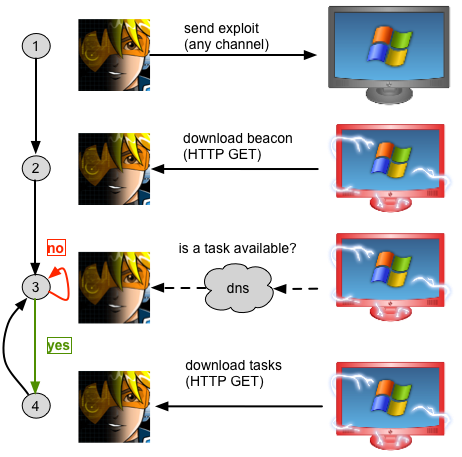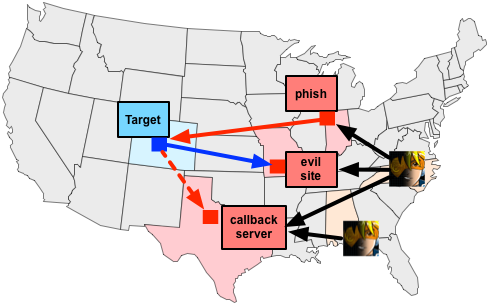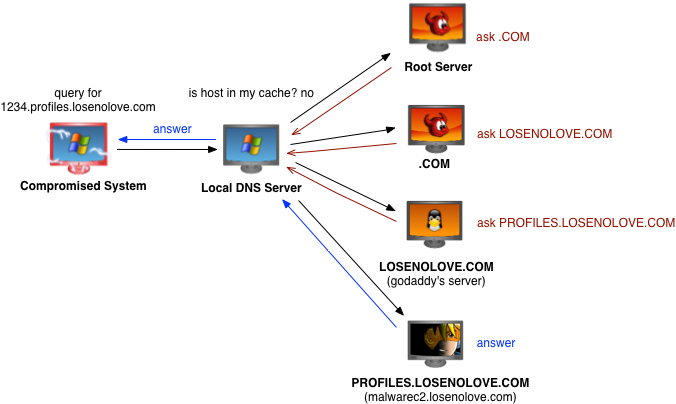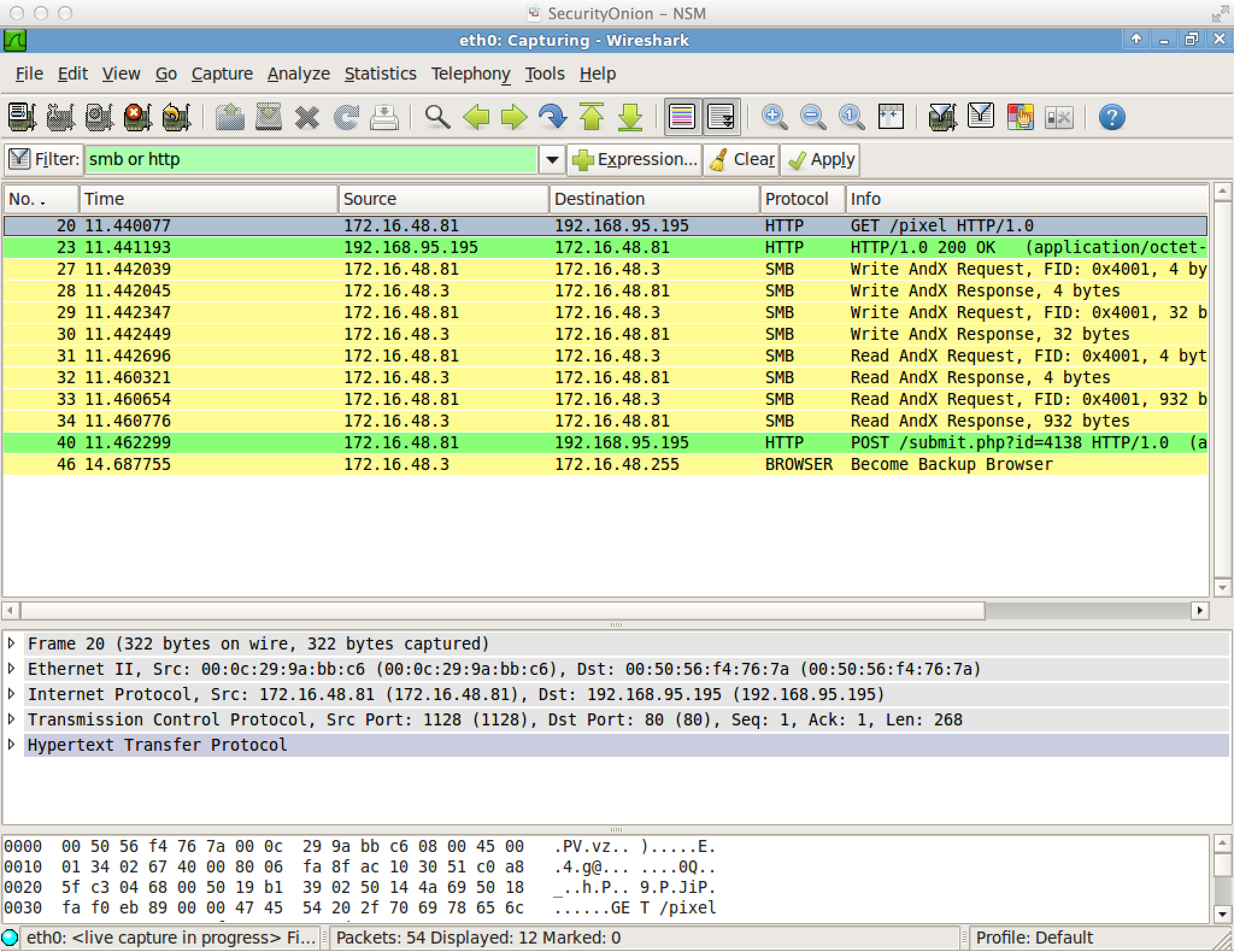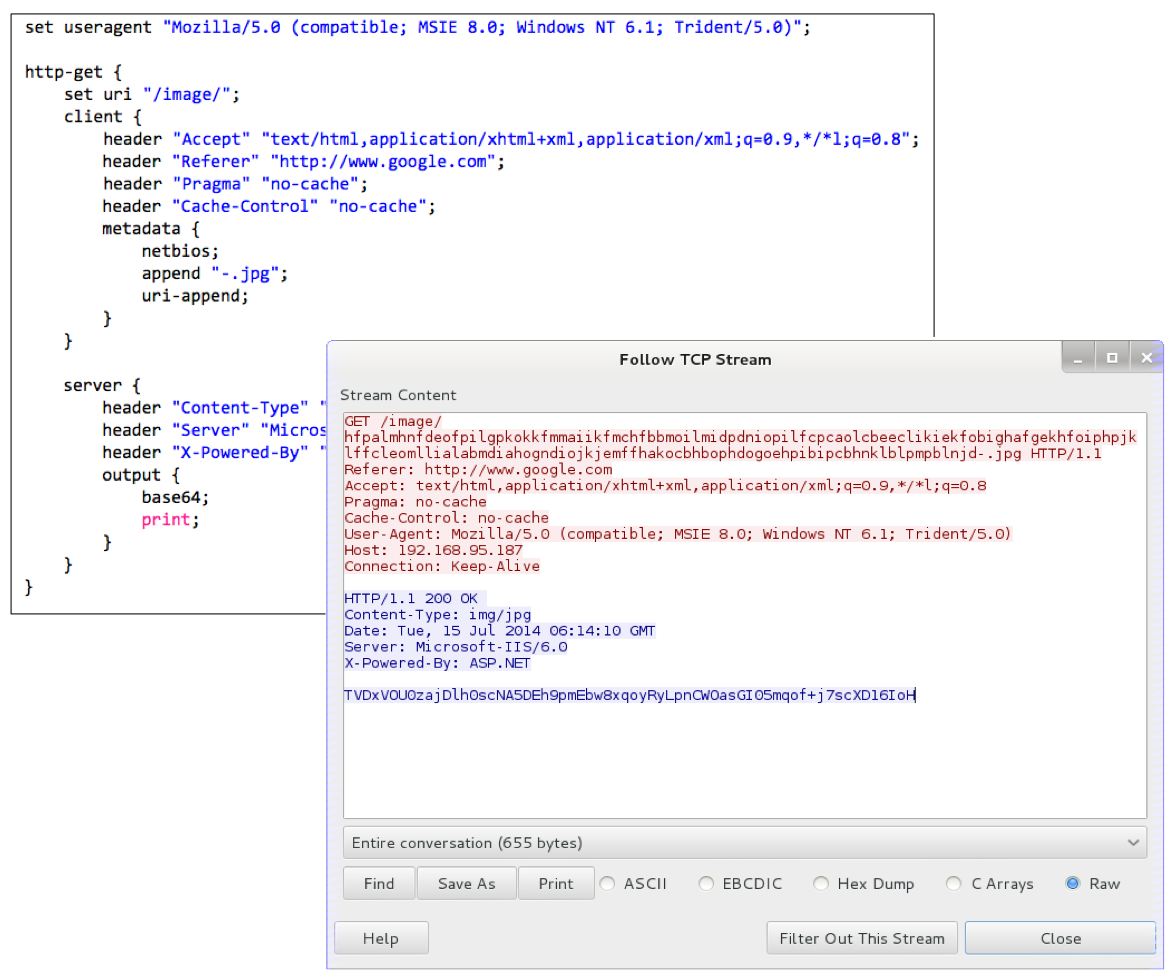One of the most important features in Cobalt Strike is its Beacon payload. This is my capability to model advanced attackers. In this post, I’d like to share my insights and reasons for the design decisions I made. If you’re a Cobalt Strike user, this post will help you reason about Beacon and fit it into your tradecraft.
From Raven to Beacon
I built Raven, an asynchronous persistent agent, for the 2012 Collegiate Cyber Defense Competition. I wanted a quiet way to hold access to compromised hosts.
Raven would connect to a web server every six minutes, request a file, and spawn a thread to execute the contents of the requested file. To task Raven, I would manually generate shellcode for a desired payload and save it to the file Raven would check for.
Later, I extended Raven to execute commands, change its sleep time, and inject arbitrary shellcode. I compiled Raven into a reflective DLL and built a user interface to generate tasks and host them on Cobalt Strike’s built-in web server. I also gave Raven a new name: Beacon.
If you’re not familiar with Reflective DLLs, they’re significant. By compiling Beacon into a reflective DLL, I made it possible to inject the payload into memory and deliver it with a Metasploit Framework exploit.
Just before I pushed Beacon, I decided to build a variant that would use DNS. In one inspired night, I wrote Cobalt Strike’s initial DNS server. I then built the Beacon variant that would issue A record requests to check for tasks before it made a connection. I saw my DNS Beacon as an opportunity to very quietly hold access to a compromised host.
Distributed Operations
Beacon became my primary agent for persistent access to compromised systems. I noticed that I would dedicate my Cobalt Strike instance to it. When I wanted to interact with Meterpreter, I would do so from another Cobalt Strike instance. I built Cobalt Strike’s model for distributed operations to get ahead of this problem.
It’s a simple idea. Team servers have no awareness of each other. The Cobalt Strike client connects to multiple team servers and presents listeners from all of its team servers in its dialogs. This makes it trivial to task Beacon to send a session to another team server.
Cobalt Strike’s distributed operations model has shown itself as an ideal tool to organize a large red team during an exercise. The best practice is to create small cells that target each network and give each cell their own team servers. Each cell should have team servers for post-exploitation and staging. Post-exploitation servers are for noisy/interactive activity on hosts. Staging servers are where a cell holds their “low and slow” asynchronous accesses.
All cells are supported by an access management team. This team monitors health and access into target networks and works to keep these accesses alive. When a cell loses their access, an access manager connects to the cell’s staging server and passes a Beacon to it. I’ve seen Cobalt Strike provide coordination for large red teams in several exercise contexts. I realize this is a niche use case, but the fact it’s possible is quite impressive to me.
Post Exploitation
Originally, I saw Beacon as a complement to Meterpreter. I would hold access to systems with it and use Meterpreter for the heavy lifting. This model broke down on me. I saw several situations where a red operator had a Beacon on a host but they could not get or keep a Meterpreter session.
This drove a shift. I knew I would need to build a minimal set of post-exploitation tools into Beacon. It was not my intent to replace Meterpreter. I just wanted a way to work if I could not safely use an interactive agent like Meterpreter.
I decided to take advantage of Beacon’s asynchronous nature and build post-exploitation features that would benefit from it. For example, Beacon’s file download feature sends one file chunk with each check-in. Using the sleep time as a throttle, it’s possible to drip a large file out of a network without attracting attention.
DNS Command and Control
Several times, I had a Beacon on a system. I would see the A record request come in and Beacon’s check-in time would roll over. I couldn’t get Beacon to download its tasks though. I call this the child in the well situation. My compromised system would let me know it was there, but due to new egress restrictions or blocks, the Beacon couldn’t reach me.
I’ve always had interest in DNS for communication, but I did not know the best way to go about it. Initially, I thought I would build a pure DNS Beacon variant and it would always communicate over DNS. The child in the well scenario justified my interest in DNS for communication and it gave me an idea about how to do it best.
I updated the DNS Beacon to support multiple data channels. The A record response during the beacon step signals which data channel Beacon should use to download its tasks. By default, DNS Beacon uses HTTP as a data channel. When I run into a child in the well scenario, I tell Beacon to use DNS A or DNS TXT records to download its tasks.
For the sake of completeness, I built a stager to download Beacon over DNS and inject it into memory. I started with the dns_txt_query_exec module by corelancod3r to do this.
After this work, I could pair Beacon’s DNS stager with a user-driven attack and use a DNS data channel to control a compromised host–without direct communication.
I use the DNS Beacon for persistence and sometimes to evade tough egress restrictions. With a high sleep time and multiple beacon domains, DNS Beacon is hard to stop.
Communication Layer
With the DNS data channel built into Beacon, I had to revisit my post-exploitation feature set. I wanted to know that I could work even if Beacon is the only payload that can get out of a network. I decided that pivoting was the missing feature. If I could pivot through Beacon, I could do most things I would want to do on a network.
To support pivoting, I built a SOCKS proxy server into Beacon. This generic interface would allow the Metasploit Framework and third-party tools to tunnel through a Beacon. This led to a lot of wins.
I had a chance to use SOCKS pivoting in one engagement and I quickly saw a gap. There were many situations where I would want, but could not get, Meterpreter onto the pivot host. My work-around was to drop the host-based firewall and tunnel psexec with a bind payload through Beacon. This inspired Beacon’s meterpreter command.
With one command Beacon will setup a one-time use SOCKS proxy server and tunnel a Meterpreter session through it. I took care to build a bind stager that binds to localhost, to avoid interference from a host-based firewall. This feature is a big deal. It transforms Beacon into an alternate communication layer for Meterpreter and the Metasploit Framework. As Beacon gains new data channels and communication innovations, Meterpreter and the Metasploit Framework benefit from it.
Named Pipes
Beacon’s SOCKS proxy and post-exploitation tools made it suitable for most tasks. I ran into two problems. First, I found myself putting Beacon on almost all compromised systems. This is really stupid. If I make all compromised systems Beacon out to the same infrastructure with the same indicators, I’m easy to catch. Second, I had no way to put Beacon onto systems that could not reach my command and control infrastructure. I needed a solution to these problems.
I opted to abuse named pipes, an inter-process communication mechanism, for a communication channel. Fun fact: you may use named pipes for inter-process communication between hosts. This traffic is encapsulated within the SMB protocol. This channel blends in well with normal traffic.
I implemented this data channel and quickly ran into the killjoy that negates most covert communication options: I didn’t have a way to stage a Beacon over a named pipe. I created a payload listener that could stage over a reverse tcp connection. I also added a pseudo-listener to my psexec dialogs to stage SMB Beacon over a bind connection. Both solutions are awkward. A host-based firewall on the target disrupts the bind stager. Egress filters tend to negate reverse TCP payloads too. I added pivot listeners to Cobalt Strike to ease this, but a host-based firewall on the pivot host can create problems too.
Privilege Escalation and Lateral Movement
I found a solution to my woes with staged SMB Beacons. Why not deliver SMB Beacon without a stager? This makes a lot of sense for the phase of the engagement where you’re most likely to use an SMB Beacon: lateral movement.
I added an option to generate executables, DLLs, and other artifacts that contain Beacon in one file. This negated the need for an SMB stager.
I then added token stealing and privilege escalation to Beacon. I focused on the standard stuff: getsystem and bypassuac. The UAC Bypass Attack was a lot of fun to dig into. I even made Beacon’s version of this attack work against Windows 8.1.
Privilege escalation, token stealing, and SMB Beacon gave me the raw materials for covert lateral movement with Beacon. It’s simple, really. Steal a token to gain the network rights of a user. Generate an SMB Beacon artifact. Use the rights of an admin user to copy the SMB Beacon artifact to a target and run it. Link to the SMB Beacon from another Beacon to assume control of it. Better, you can do these steps from a Beacon with a high sleep time. This is how I do lateral movement now. I don’t use Metasploit’s psexec modules unless I’m in a hurry.
Malleable C2 Profiles
There’s one problem left. I use Beacon for all phases of post-exploitation. I use it as a communication layer, as a temporary placeholder, and as a persistent agent. It’s dangerous to use common indicators for each of these phases. Getting caught once could lead to the discovery of other attack infrastructure and compromised systems.
This led to several questions: Could I decouple Beacon’s network indicators from its built-in functionality? Could I provide a non-developer full control over these indicators? This thought process led to Malleable C2.
Cobalt Strike ingests Malleable C2 profiles. A C2 profile specifies what Beacon’s communication should look like. From a profile I derive how to send and receive data. If you want to evade detection, you can craft a profile that looks like something that blends in.
Malleable C2 solves the indicators problem. Now, each set of attack infrastructure gets its own profile. The Beacons for post-exploitation, staging, persistence, and other purposes do not need to look the same. Each team server can host Beacons with different profiles.
Malleable C2 also allows Beacon to look like other malware. It takes less than five minutes to write a profile. This allows for threat replication during an assessment. Use your adversary’s indicators to test your customer’s ability to analyze and attribute the attack. It’s an interesting idea.
Summary
The concepts in this blog post represent two and a half years of development and lessons learned on my part. I hope you enjoyed reading about Beacon’s journey from asynchronous placeholder for Meterpreter, to alternate communication layer, to a flexible capability to replicate advanced threats.
